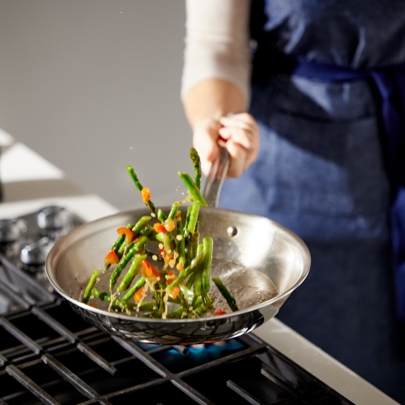Soups & Stockpots
- Sale
D3 Stainless 3-ply Bonded Cookware, Mini Casserole with Lid, 1 quart
Regular Price Regular Price $100.00 Special Price Special Price $69.99 - Sale
G5® Graphite Core Stainless Steel 5-ply Bonded Cookware, Stockpot with Lid, 8 quart
Regular Price Regular Price $479.99 Special Price Special Price $449.95 - Sale
D3 Stainless Everyday 3-ply Bonded Cookware, Rondeau, 8 quart
Regular Price Regular Price $240.00 Special Price Special Price $199.99 - Sale
BD5 Stainless Steel 4 Qt. Soup Pot and Ladle Set
Regular Price Regular Price $220.00 Special Price Special Price $149.99 - Sale
D3 Stainless Everyday 3-ply Bonded Cookware, Stockpot with lid, 6 quart
Regular Price Regular Price $335.00 Special Price Special Price $199.99 - Sale
D5 Stainless Brushed 5-ply Bonded Cookware, Soup Pot with lid, 4 quart
Regular Price Regular Price $299.99 Special Price Special Price $199.99 - Sale
D5 Stainless Polished 5-ply Bonded Cookware, Ultimate Soup Pot with lid and Ladle, 6 quart
Regular Price Regular Price $349.99 Special Price Special Price $199.99
With exceptional performance, durability, and style, our stainless-steel stockpots and soup pots are quintessential, all-purpose cookware. Making soups and stews with ease, these stockpots and soup pots feature tall sides that lock in delicious flavor and help you steam, blanch, and more. Perfect your next soup or stock with one of our stainless-steel soup pots, or stainless-steel stockpots!




































































































































